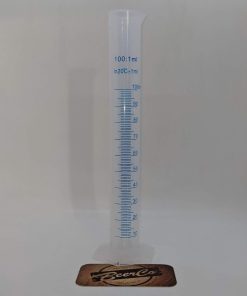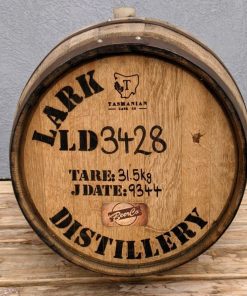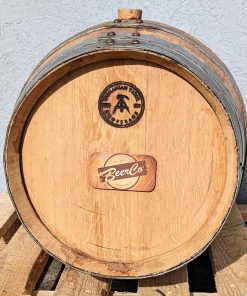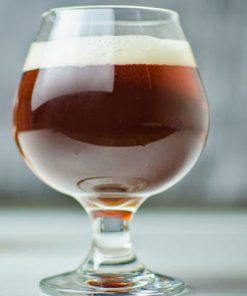Gladfield Chit Malt Gladfield Malt
$ 5,95 $ 3,57
Gladfield Barley Chit Malt is here! The term chit in malting represents the first stage of germination, where the barley has taken up enough moisture from steeping to start the magic process of turning starch into soluble sugars to feed the yeast during fermentation. Chit malt has a particularly high level of inherent starter enzymes, which contribute significantly to improving the conversion of starch, thus increasing the yield. The reason that the Chit Malt can improve body and foam is due to the process of modification of the starches in the grain by the enzymes still in the early stages when we start kilning this malt. It will leave long protein chains in the malt that the yeast won’t be able to digest its entirely during fermentation.
Gladfield Chit malt is a good alternative for raw adjuncts. The flavour impact in a beer is minimum with subtle green, grassy raw grain flavour. As Chit malts contain mostly high-molecular proteins and sugars and thus retain many of the green, grassy characteristics of raw grain. One of its main purposes is to improve the finished beer’s body and foam stability.
Chit malt is usually only lightly kilned and thus pale; only rarely is it roasted like color malts. Because chit malt is modified just enough to be technically called “malt,” it can serve, in essence, as a legal functional substitute for unmalted or roasted barley, which are important elements in the grist composition of many Belgian and British beer styles.
Pack Sizes:
- 1Kg Bag
- 5Kg Bag (SAVE 20% OFF 1Kg Price)
- 25Kg Sack (SAVE 28% OFF 1Kg Price)
Typical Beer Styles:
- Belgian Ales
- British Ales
- Hazy Beers
- Sour Beers
Typical Usage Rates:
- Up to 15%
Certificate of Analysis:
- CHI #027 Best Before: 26 Jan 2025
- CHI 032 Best Before 15-JAN-2026
Typical Analysis:
| EBC Test Method | Specification |
|---|---|
| Moisture (max) % | 10 |
| pH | 5.75 |
| Colour (EBC) | 2-6 |
Further Reading on Chit Malt:
Chitting is the initial growth phase of the acrospires and rootlets right after the rupture of the grain’s seed coat during the malting process. The seed coat consists of the testa and pericarp layers. These layers protect the kernel’s enzyme-containing aleuron layer, which, in turn, envelops the endosperm. As long as the testa and pericarp layers as well as the husks are intact, they restrict the exchange of gasses and moisture between the endosperm and the environment. Chitting, therefore, is an indication of the awakening of the siloed seed from dormancy and is the first step in the transformation of grain into malt.
Chitting accelerates especially during the oxygen-rich ventilated air rests that the raw grain undergoes during the steeping cycle, and it continues into the initial phase of the germination cycle. During chitting, the seeds rapidly take up water (hydration) and oxygen (respiration). As the bursting of the testa and pericarp layers progresses, the seeds’ respiration accelerates and the temperature in the steeping vat rises. Proper chitting is essential, because it is a precondition for germination. Irregular chitting would decrease the germination rate and thus result in inhomogeneous malt.
While during normal steeping and germination, chitting is only one step in a lengthy steeping and germination process, on rare occasions, the chitted grain will be moved directly into the kiln after just 3 or 4 (instead of perhaps 7) days in the germination chamber. The result of this short cut is called “chit malt.”
| Size | 1 Kg, 5 Kg, 25 Kg |
|---|
Fast Shipping with Professional Packaging
We provide a variety of shipping options thanks to our long-standing relationships with UPS, FedEx and DHL. Our warehouse personnel are well trained and will be able to pack your goods in accordance with the exact and precise specifications. Before shipping, all goods are carefully examined and secured. We deliver to thousands of clients each day across multiple countries. The fact that we're dedicated to becoming the largest online retailer in the world is obvious. Warehouses and distribution centers can be found in Europe as well as the USA.
Orders that contain more than one item are assigned processing times according to each item.
We will inspect each and every one of the items ordered before shipping. The majority of orders are shipped within 48-hours. Delivery is expected to take between 3 and seven days.
Returns
We do not manage the stock in our warehouse or factory. The levels of stock can change at any time. Please be aware that it's possible for your order to be out of stock after you have placed the order.
The policy is 30 days. If it's been longer than 30 days since you bought the item We're sorry to say that we can't offer you a full refund or exchange.
The item cannot be used, and it must be in its original condition. It must also still be in the original package.
Related products
Brewing Aids
Equipment
Brewing Aids
Equipment
Brewing Aids
Equipment
Brewing Aids
Equipment
Brewing Aids
Equipment
Equipment






























































